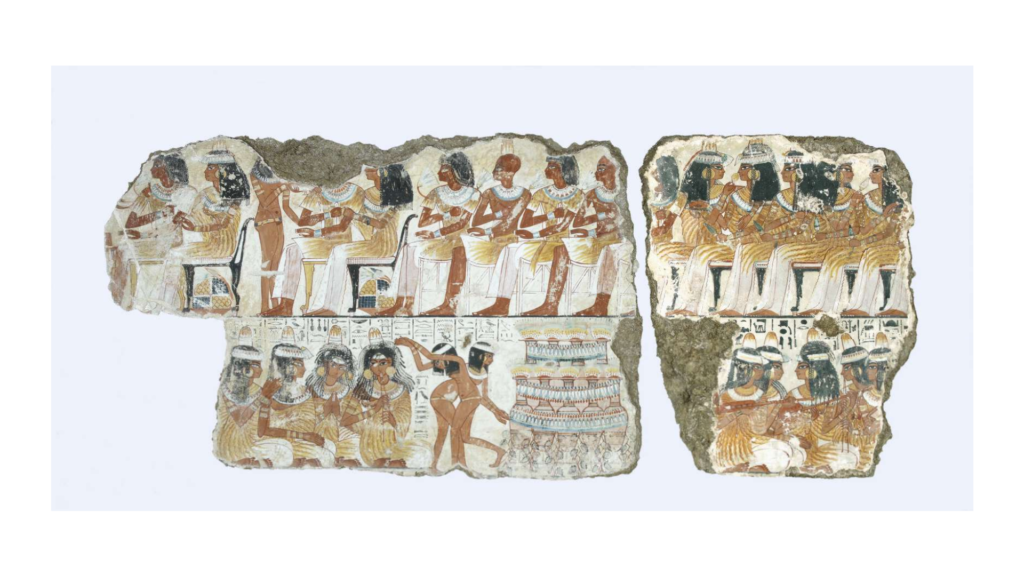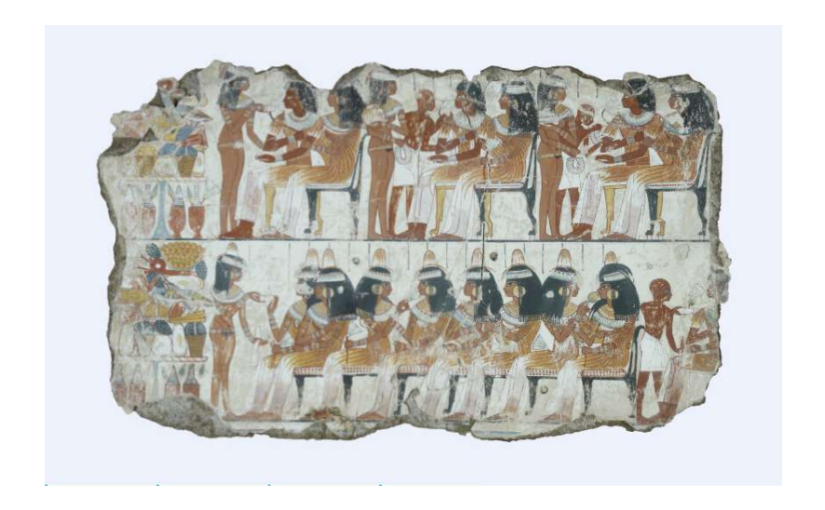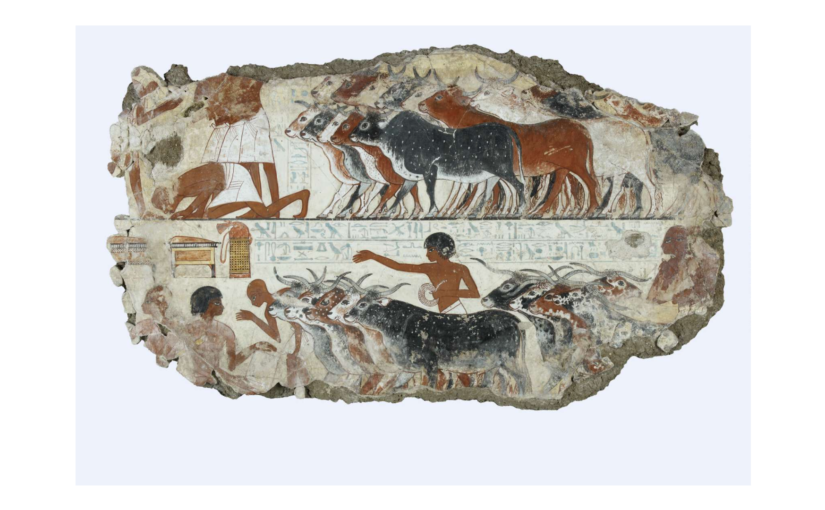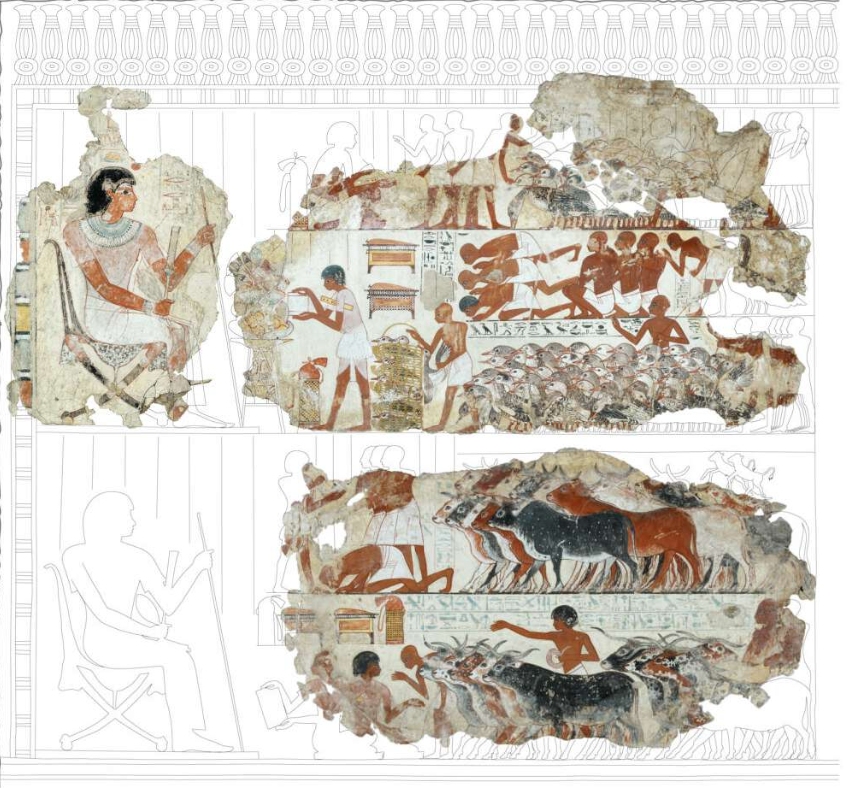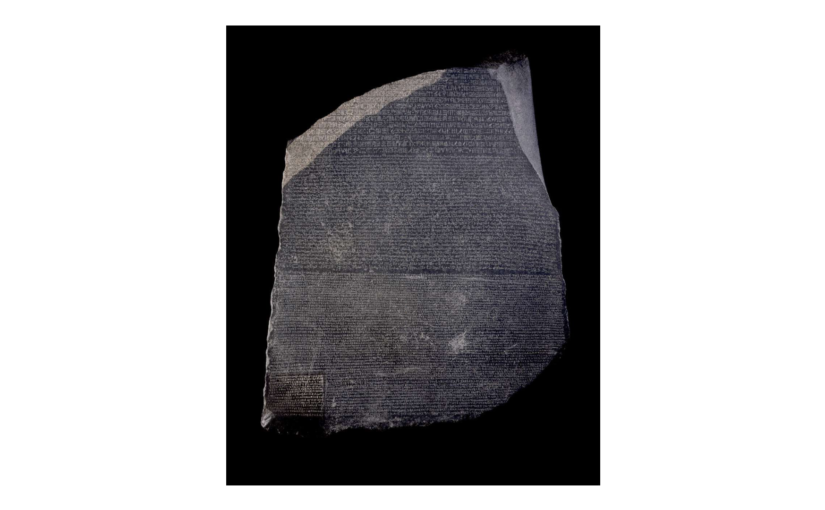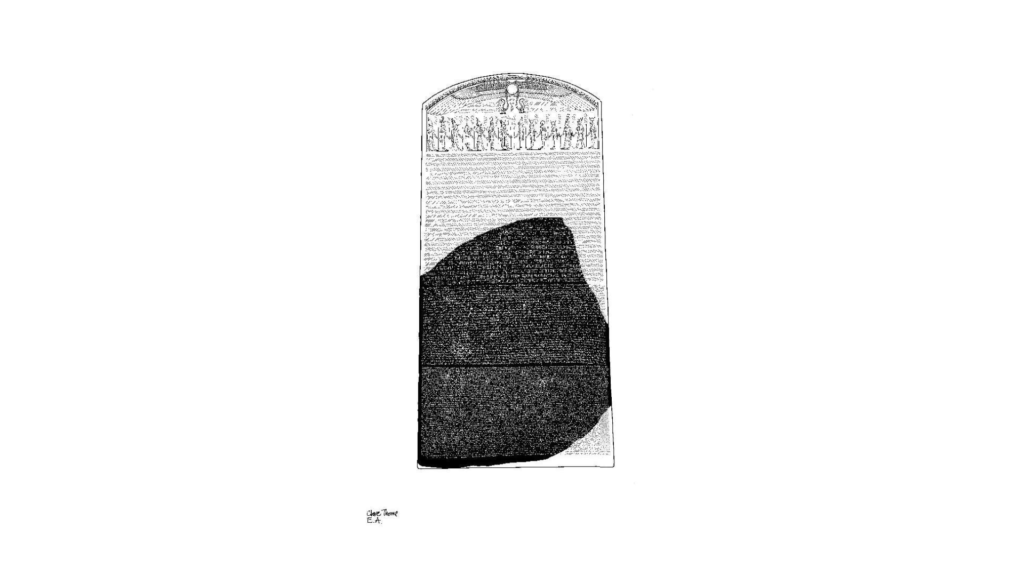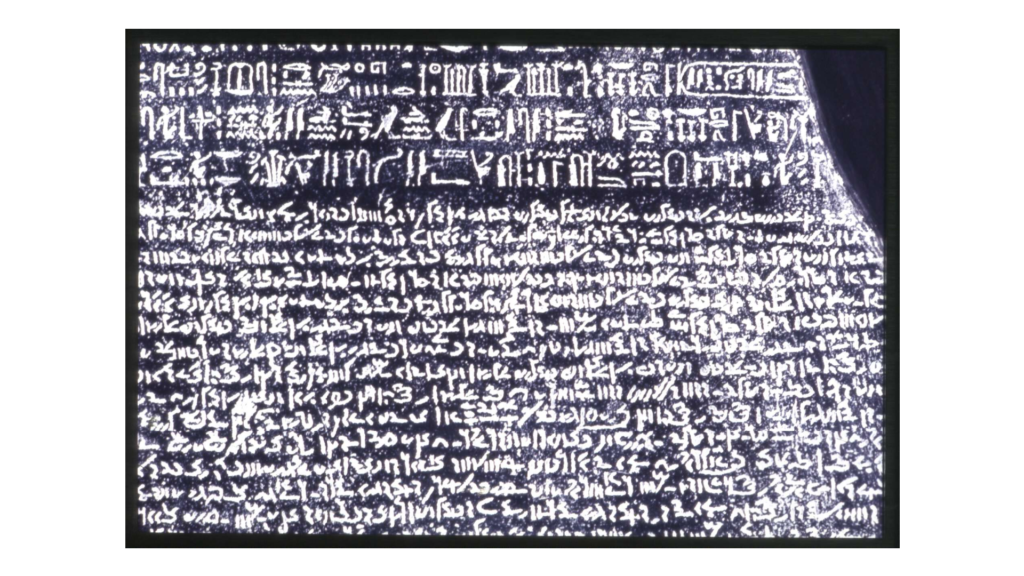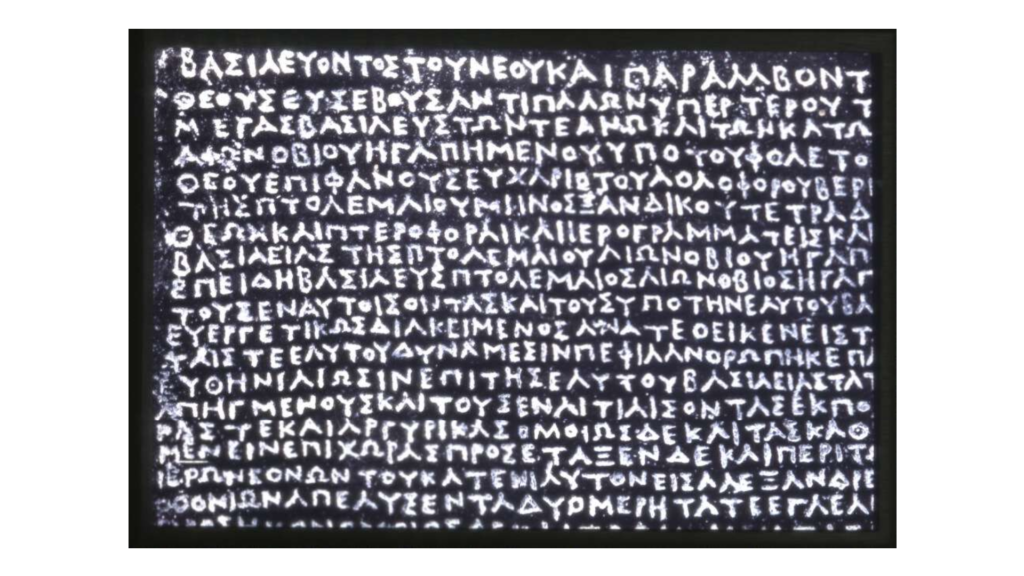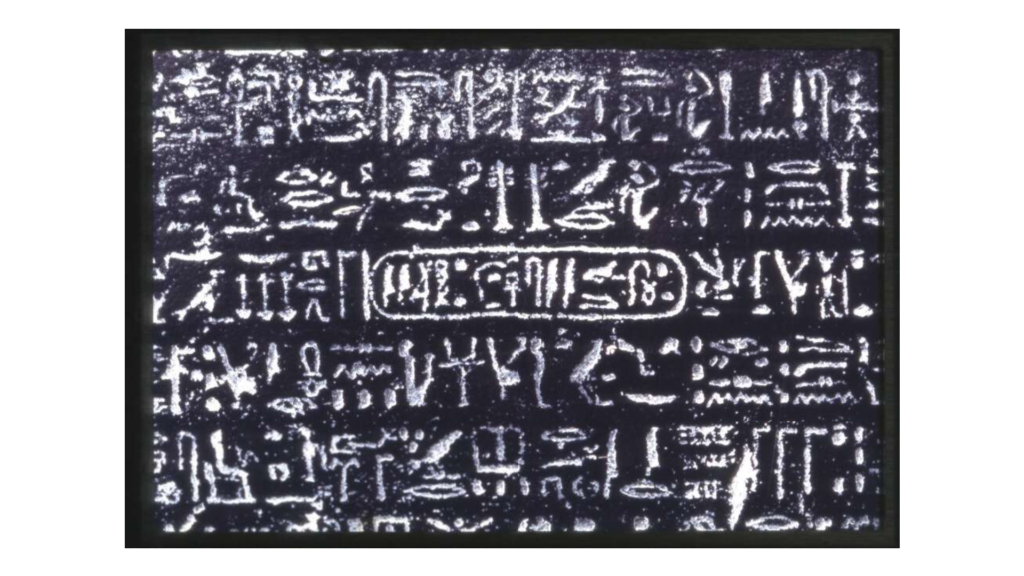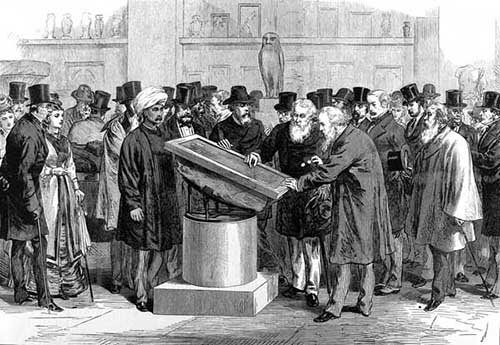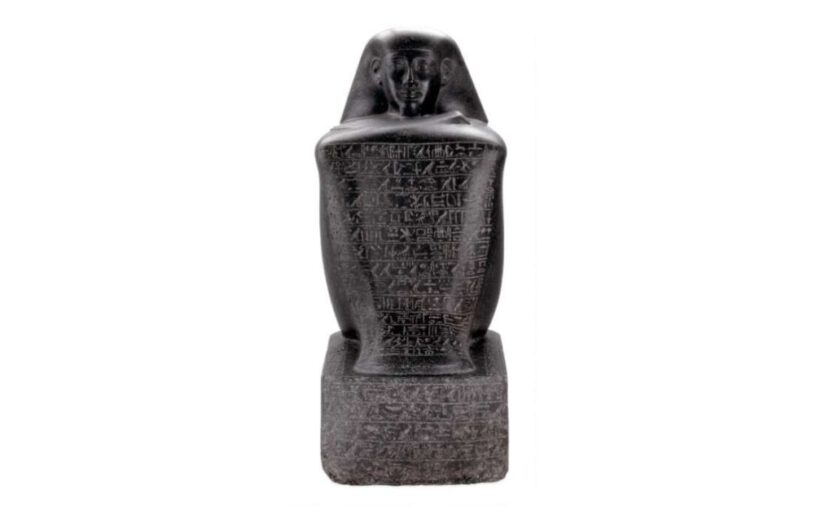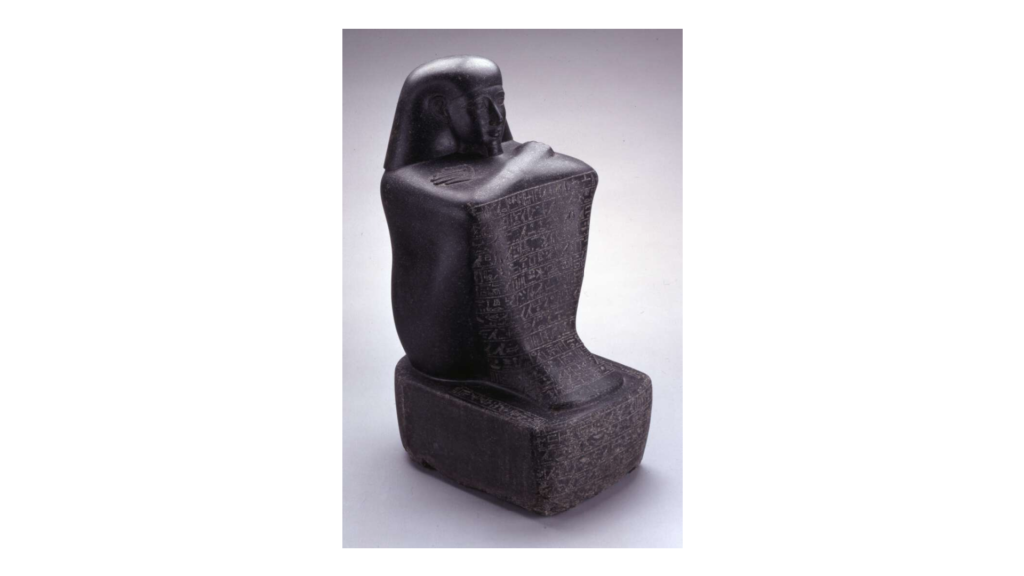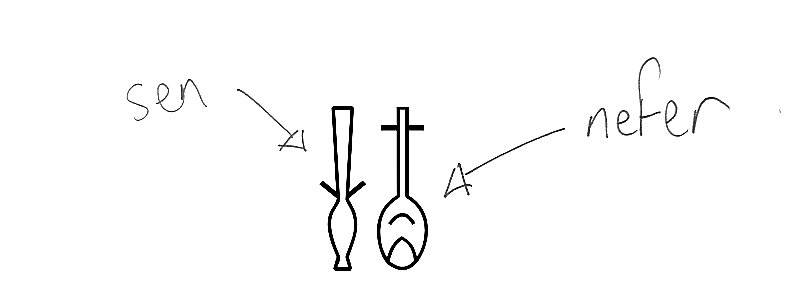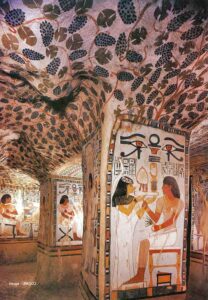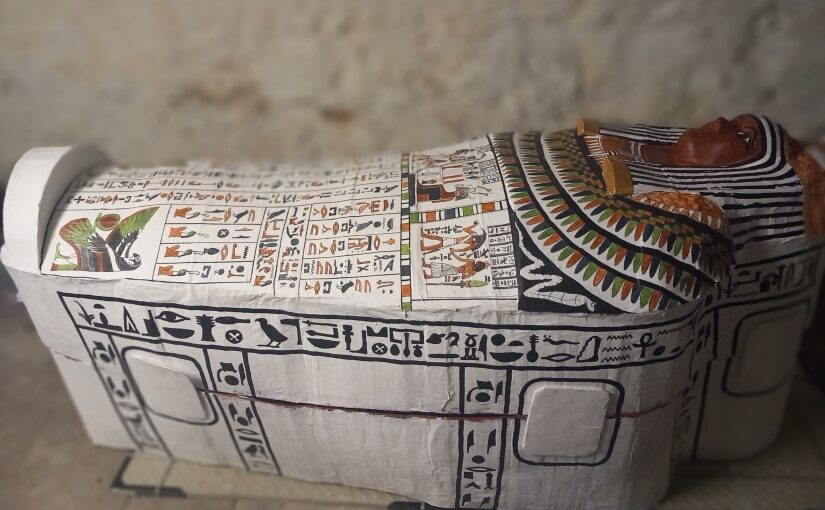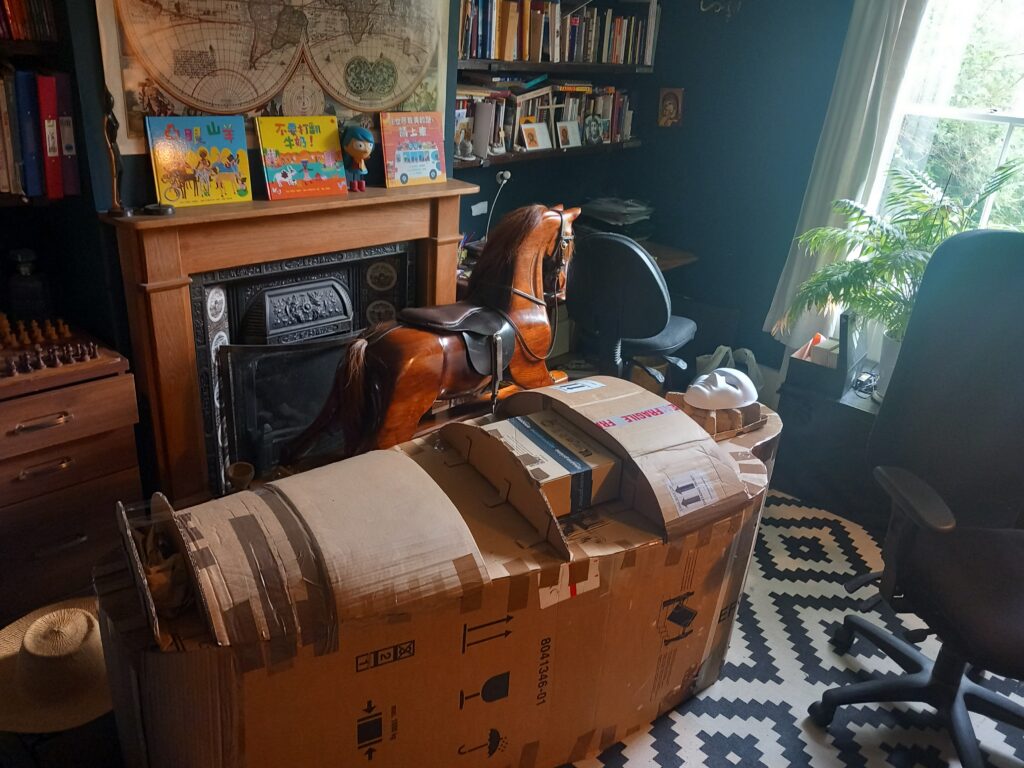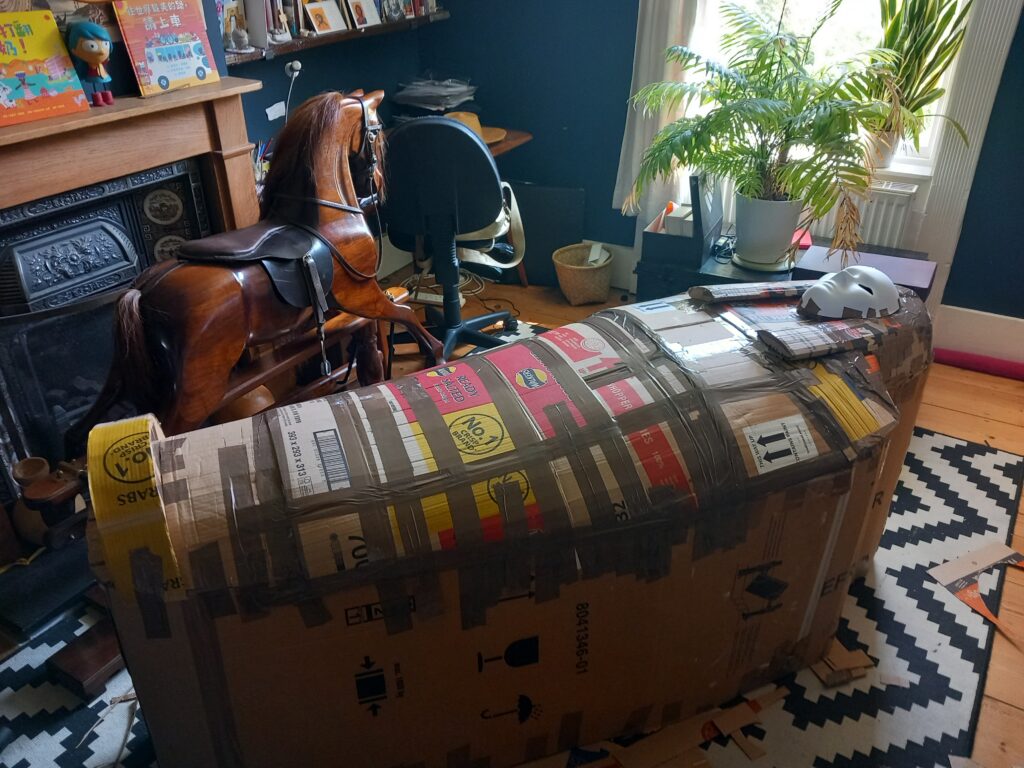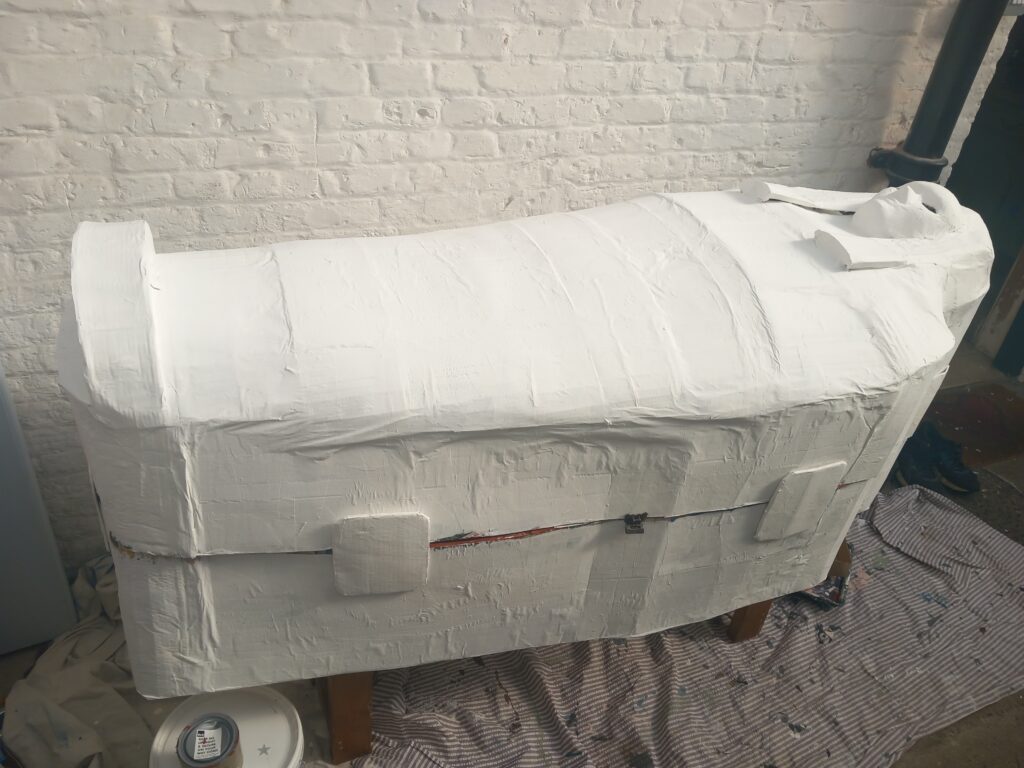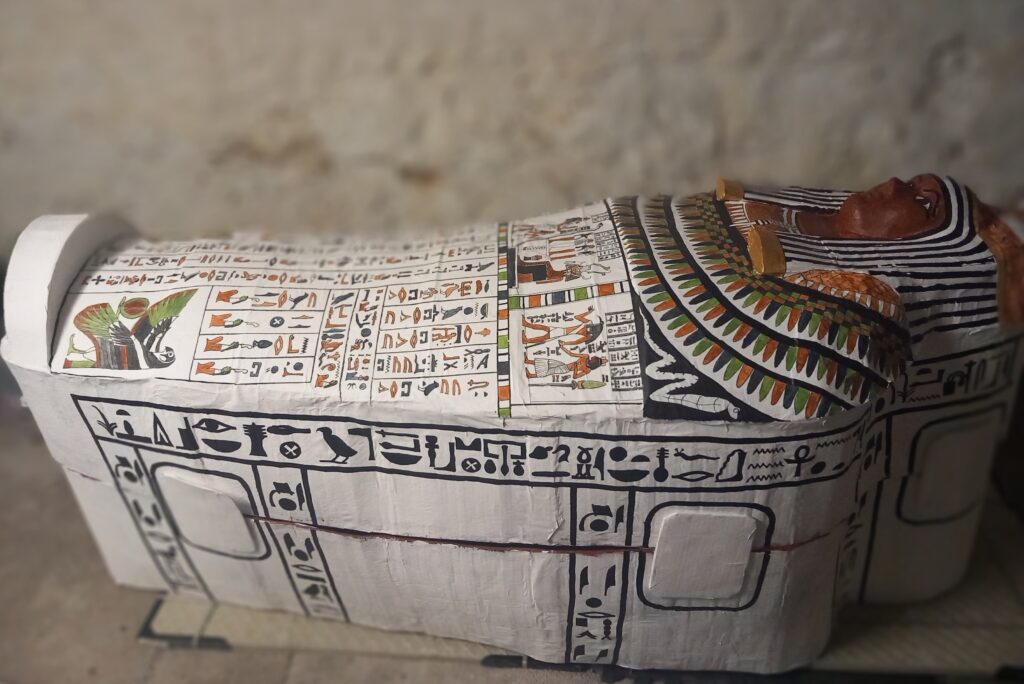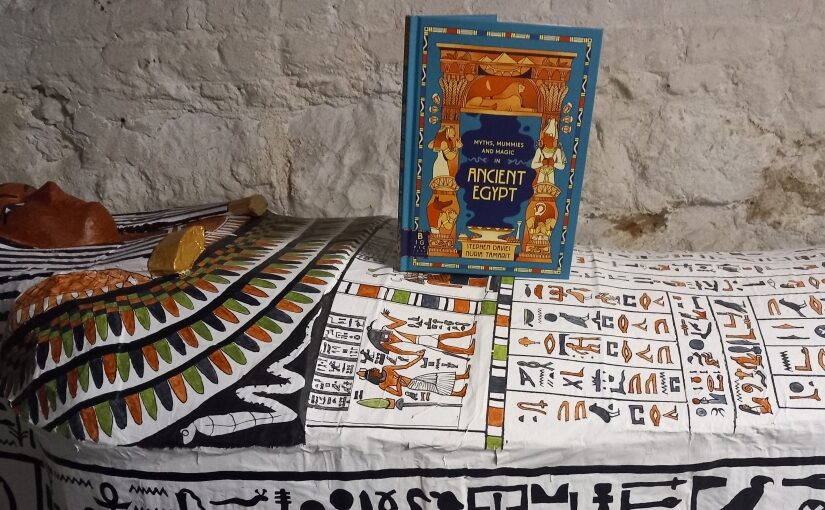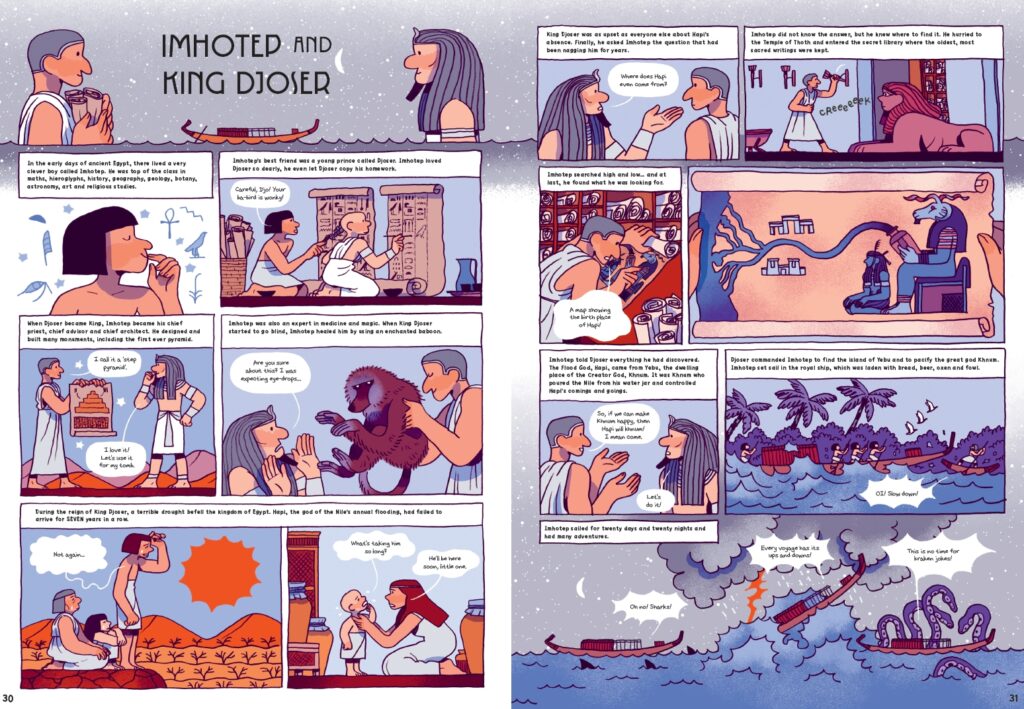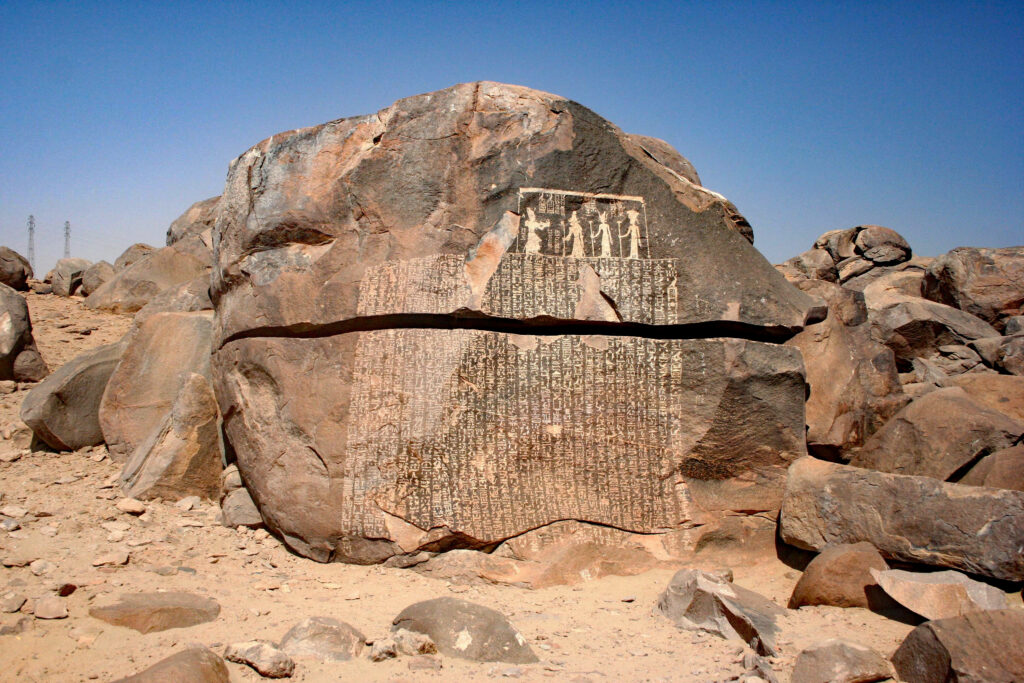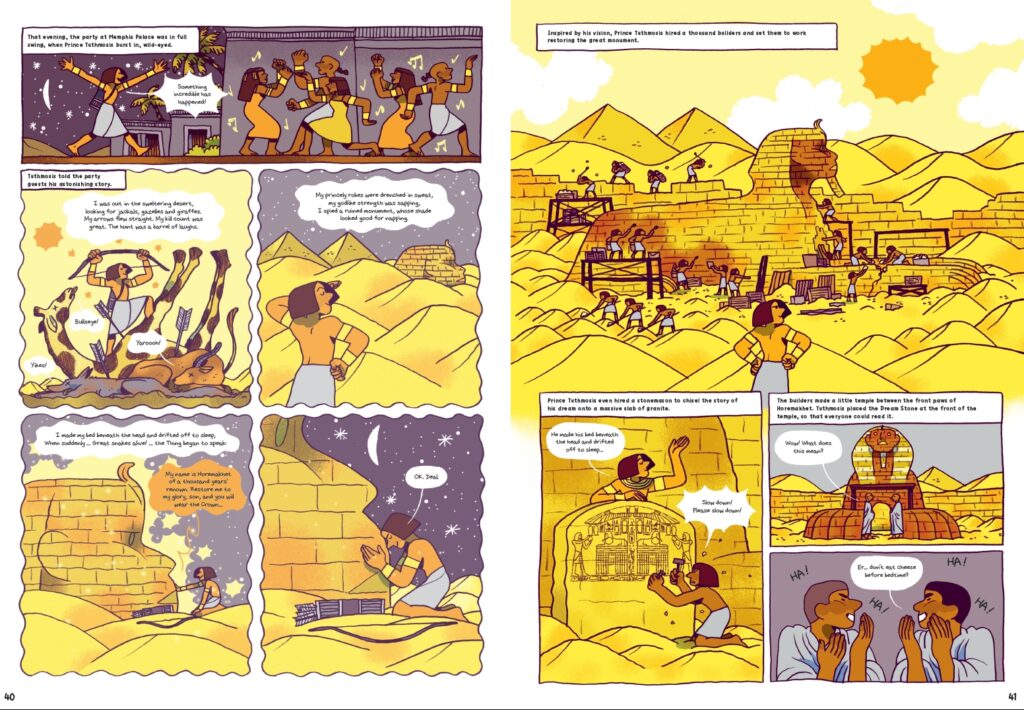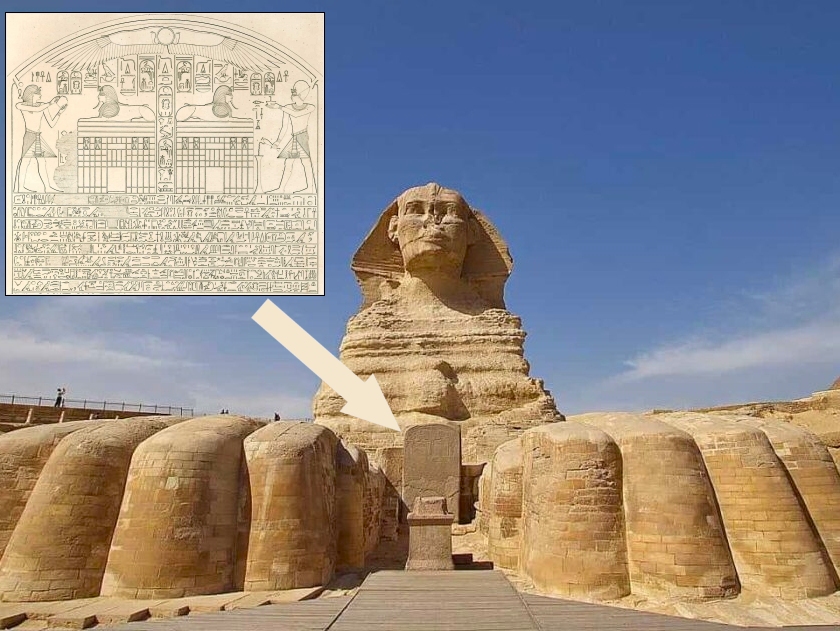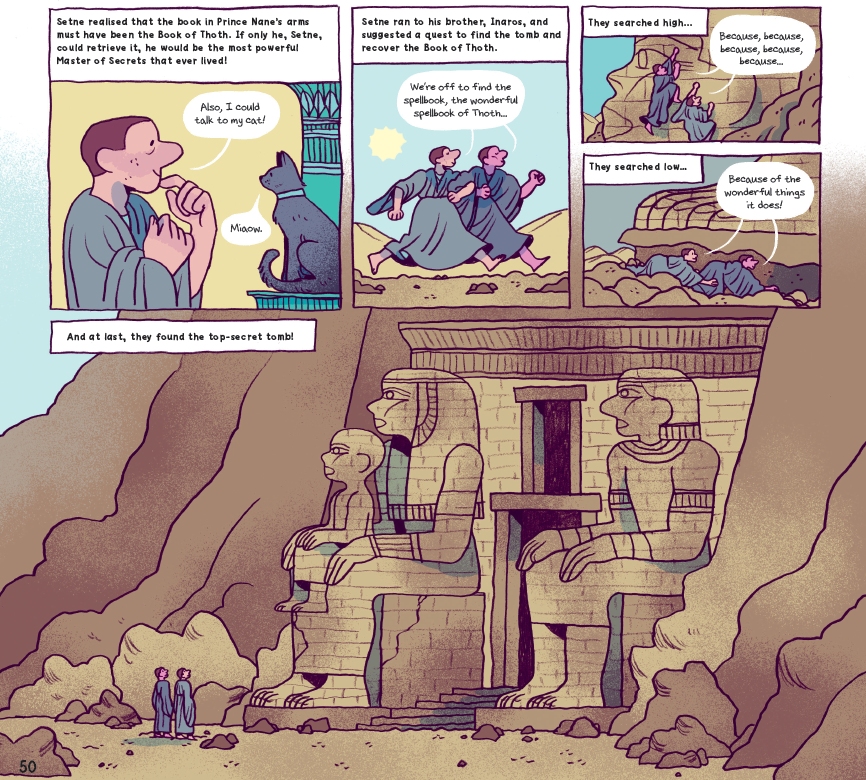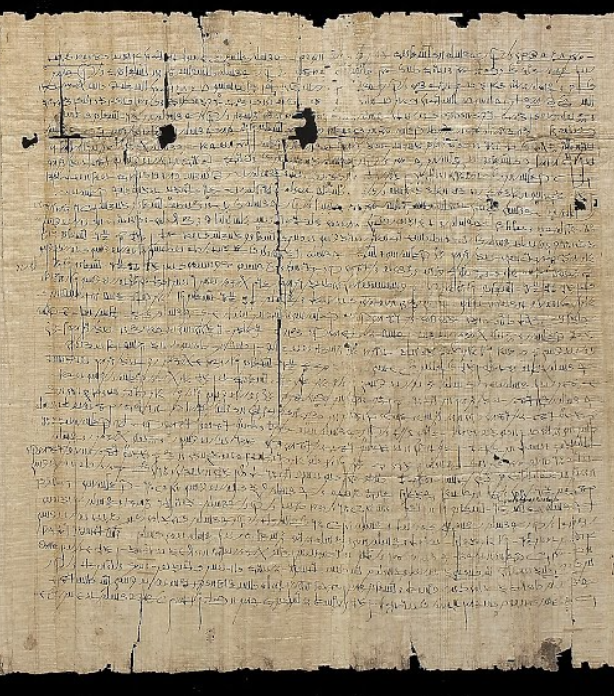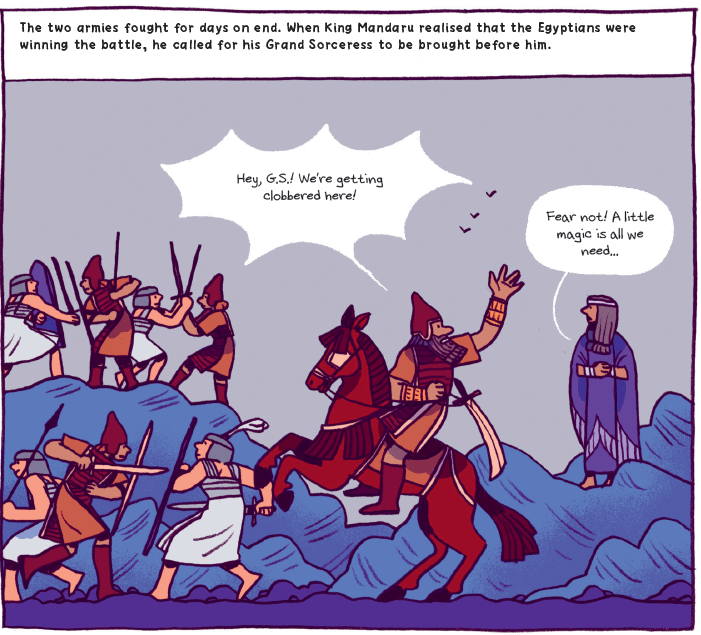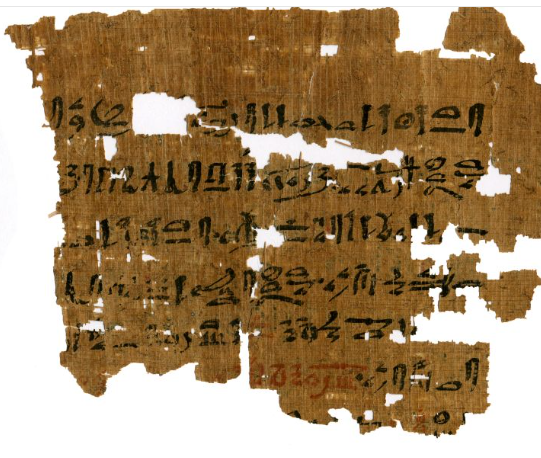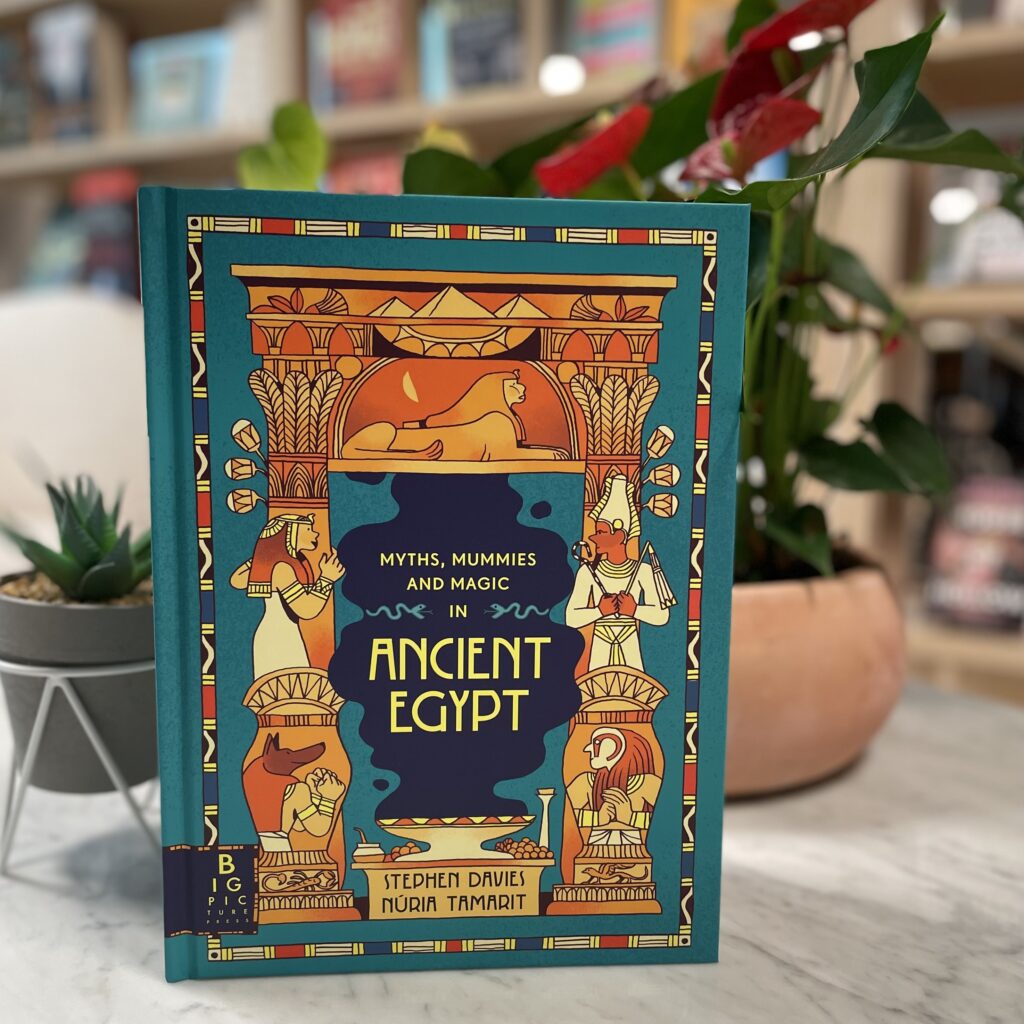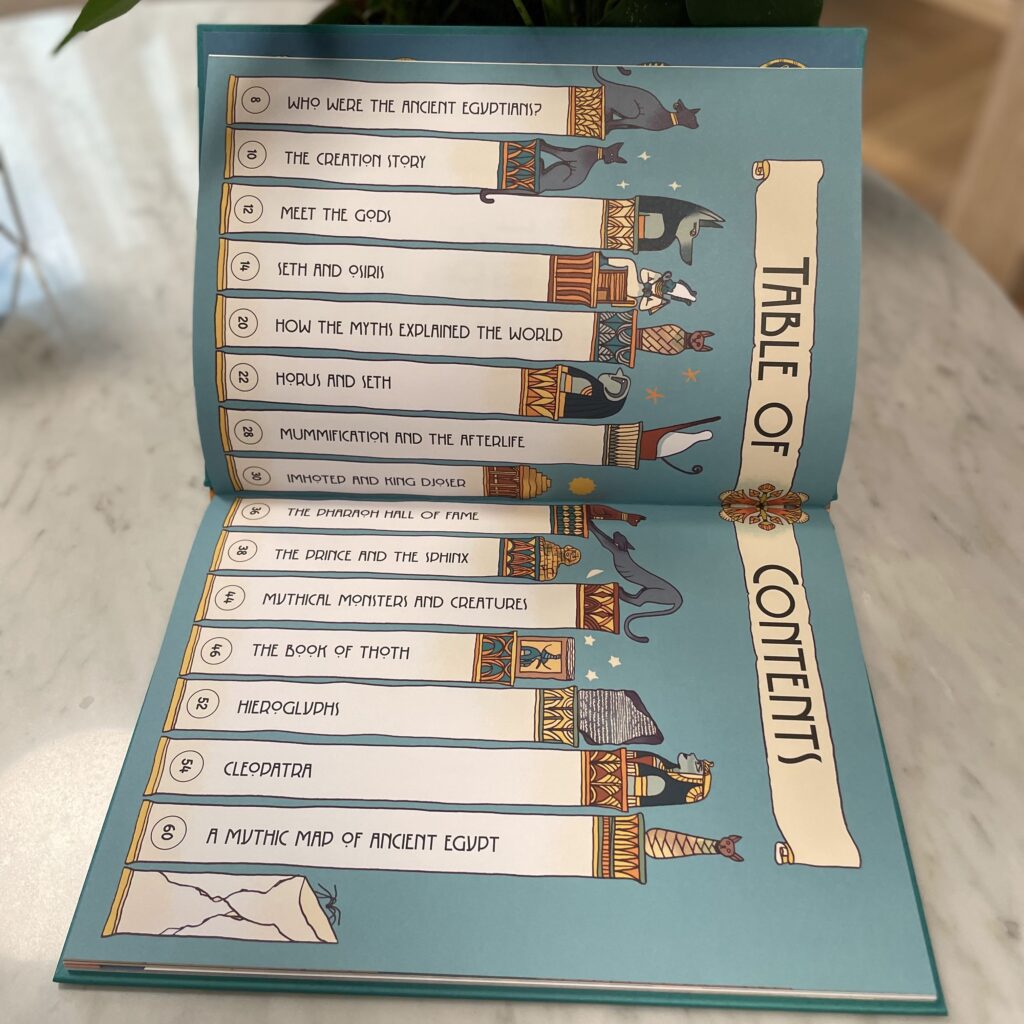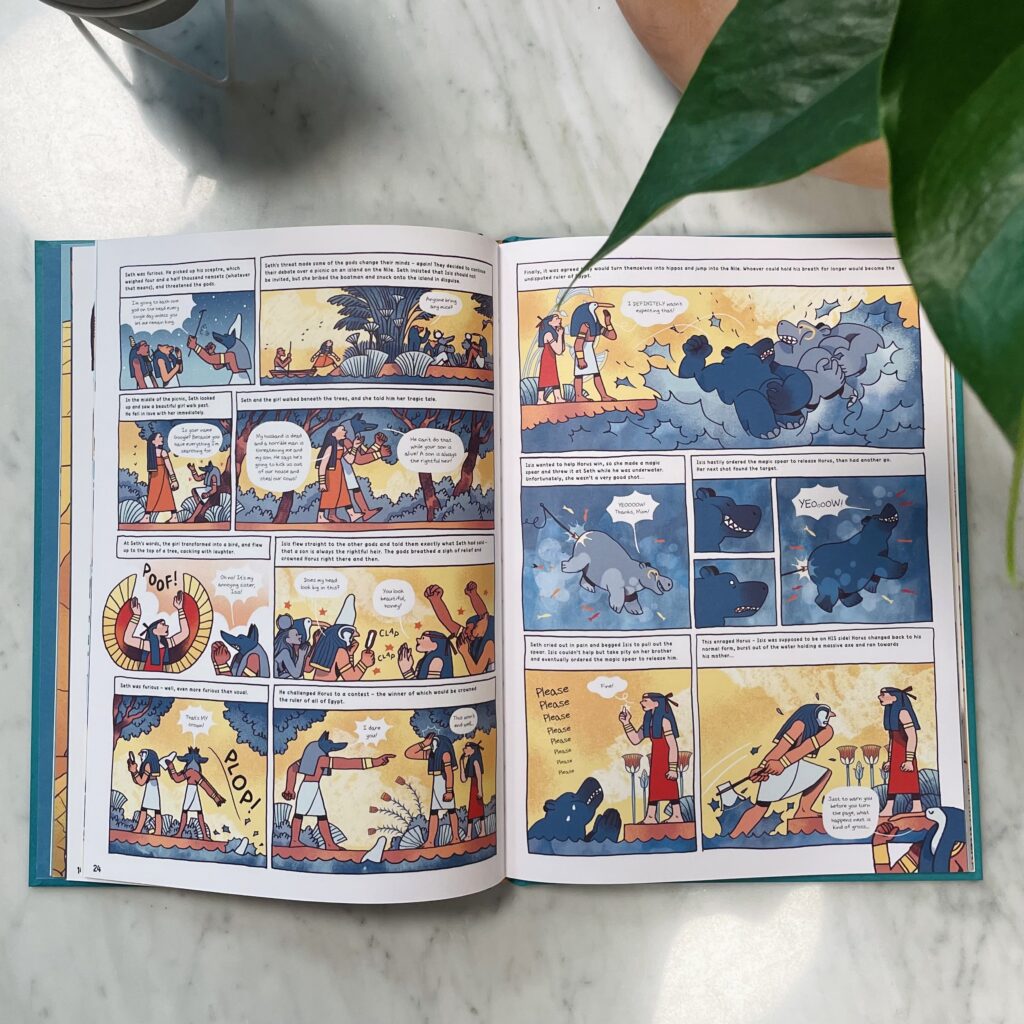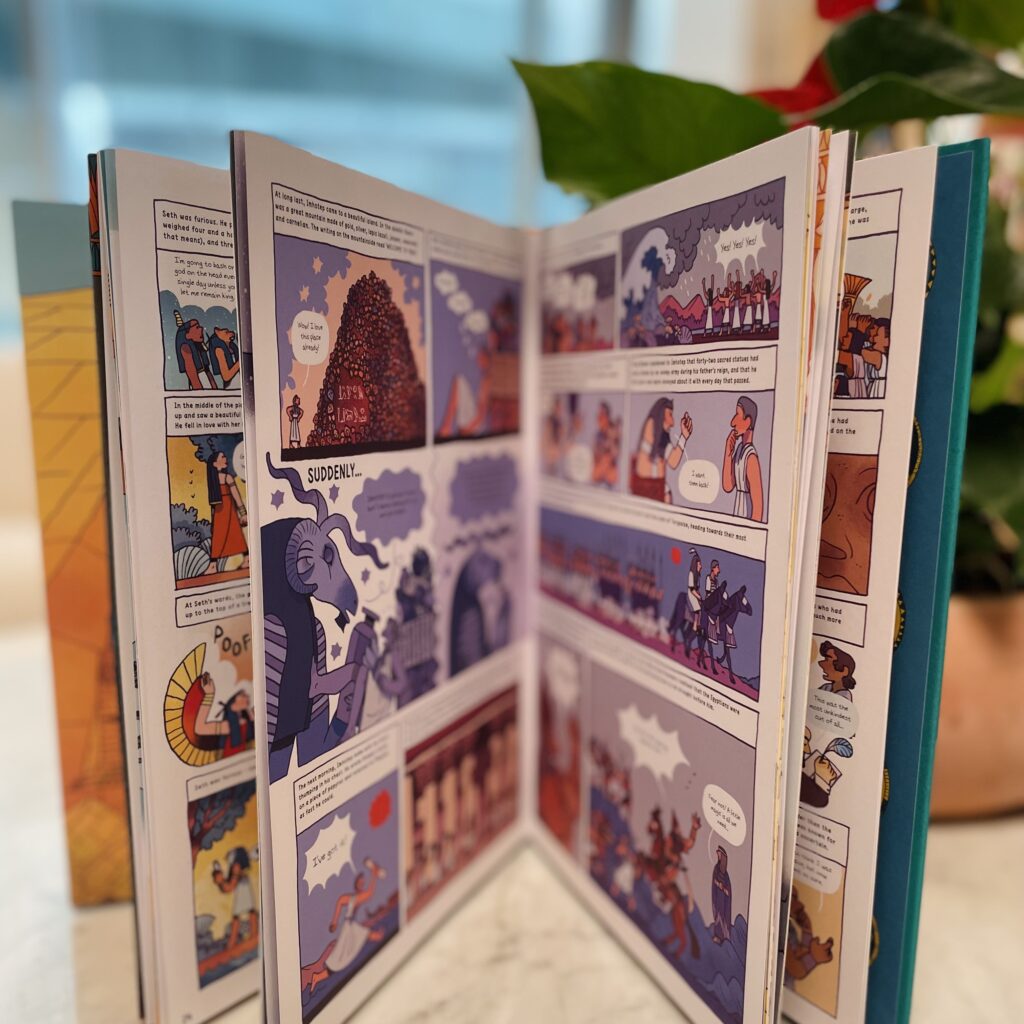Remember ‘Belzoni the Great’, the circus strongman who brought the head of Ramesses II back to England? He brought back hundreds of other artefacts, too, including these paintings from the tomb of Nebamun.
Ancient Egyptian craftsmen painted beautiful scenes all over the walls and ceilings of their most important tombs, then sealed them shut. The paintings were intended not for human eyes but for the Egyptian gods and for the spirit of the dead person. Belzoni did not care about that. He and his men used saws and chisels to rip great chunks out of the walls of Nebamun’s tomb chapel.
These colourful pictures of Nebamun’s life show him living a happy life, healthy, wealthy and wise. Today’s scene depicts a fabulous banquet with well-dressed guests, piles of food, skilful musicians and saucy dancers. Nebamun and his wife were on the far left of this scene, but that part of the painting is now lost. That’s what happens when you tear enormous chunks out of a three-thousand-year-old plaster wall.
